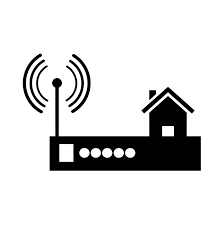
Signal-to-Noise Ratio (SNR) contrasts signal strength with background noise level whereas RSSI gauges signal intensity. Better connection quality follows from a high SNR—that is, from a signal far stronger than the noise. While both RSSI and SNR are crucial for determining wireless network performance, in circumstances with strong interference SNR is often more vital for guaranteeing data fidelity. Received signal strength indicator.
How RSSI Affects Network Performance
Typically, a strong RSSI results into improved network performance. Higher RSSI devices will have lower latency, faster data rates, and fewer failed connections. On the other hand, when RSSI falls below a particular level, consumers could find:
- Slow connection speeds
- Inconsistent connectivity
- Increased latency (especially in online gaming)
- Frequent disconnects
RSSI in Different Technologies (Wi-Fi, Bluetooth, Cellular)
RSSI in Wi-Fi Networks
Received signal strength indicator is used by Wi-Fi devices to ascertain their signal reception from the router or access point. Most Wi-Fi gadgets look for a better connection or constantly analyze their RSSI to determine whether they should stay hooked to a network..
RSSI in Bluetooth Communication
Bluetooth devices also ascertain signal strength using RSSI. In Bluetooth Low Energy (BLE) uses, such proximity detection or location-based services, where the distance between devices may be deduced from RSSI readings, this is very helpful.
RSSI in Cellular Networks
For cellular devices, RSSI helps in determining signal strength from the nearest cell tower. Cellular providers use this data to manage handoffs between towers and optimize coverage.
How to Measure RSSI
RSSI can be measured using specialized tools or software. Many devices have built-in methods to display RSSI values, such as:
- Wi-Fi Settings: Both iOS and Android devices can display Wi-Fi signal strength in their settings.
- Developer Tools: Advanced users can access RSSI values using developer settings or command-line tools in laptops and desktops.
- Dedicated Apps: Apps like “WiFi Analyzer” or “NetSpot” provide detailed RSSI data and help users locate weak spots in their Wi-Fi network.
Improving RSSI: Tips and Tricks
Positioning of Wireless Devices
RSSI will be much improved by either removing barriers between your device and the signal source or approaching your router. Another way to distribute coverage equally is to center the router.
Reducing Interference
Interference can also arise from other wireless devices such baby monitors, cordless phones, and microwaves. Changing to a less crowded frequency band—say, 5 GHz rather than 2.4 GHz—helps to lower interference.
Upgrading Equipment
Older routers and devices may not support the latest wireless standards, resulting in poor signal strength. Upgrading to a newer router with better antenna technology can improve RSSI.
Common Tools for Measuring RSSI
Tools like WiFi Analyzer, NetSpot, and inSSIDer allow users to measure RSSI and optimize their network setup. These tools offer visual maps of signal strength, making it easier to spot areas with weak coverage.
RSSI Thresholds for Common Applications
RSSI in Gaming and Streaming
For online gaming and video streaming, an RSSI of at least -60 dBm is recommended to avoid buffering and latency issues.
RSSI for Smart Home Devices
Most smart home devices can function with RSSI values as low as -70 dBm, but for devices like security cameras, stronger signals are necessary to ensure uninterrupted video streaming.
RSSI in IoT Systems
In IoT networks, RSSI is crucial for ensuring stable communication between sensors and gateways. Depending on the application, a higher or lower RSSI threshold may be required.
RSSI in Troubleshooting Wireless Issues
Examining the RSSI is a wise first step in addressing wireless problems. Low RSSI values can point to hardware restrictions, interference, or distance issues. Moving the router, clearing barriers, or improving the device’s antennae could all help to raise RSSI.
RSSI and Battery Life Considerations
Because they labor more to keep a connection, devices with low RSSI sometimes consume more power. Particularly in low-signal environments, cellular devices will up their power consumption, therefore drastically shortening battery life.
Future of RSSI in Wireless Technologies
RSSI will be essential in maximizing performance as wireless technologies develop. Better signal management methods are being created with the advent of 5G networks, Wi-Fi 6, and Bluetooth 5.0 to guarantee that consumers, even in crowded settings, get the highest possible connection quality.
Conclusion
Improving the performance of your wireless devices depends on your knowing of and optimization of RSSI. Whether your network administrator, gamer, casual internet user, or otherwise, learning how to track and raise RSSI will greatly affect the quality of your connection.
FAQs
- What is a good RSSI value for Wi-Fi?
A good RSSI value for Wi-Fi is between -30 dBm and -60 dBm, which indicates strong signal strength. - Can I improve RSSI by upgrading my router?
Yes, upgrading to a modern router with advanced antennas can improve RSSI and extend coverage. - What affects RSSI the most?
Distance from the signal source, physical obstructions, and interference are the main factors that affect RSSI. - Is RSSI important for gaming?
Yes, a strong RSSI is important for gaming to avoid latency and connection drops.
Does RSSI affect battery life?
Yes, devices in low-signal areas consume more power to maintain a connection, which can drain the battery faster.

